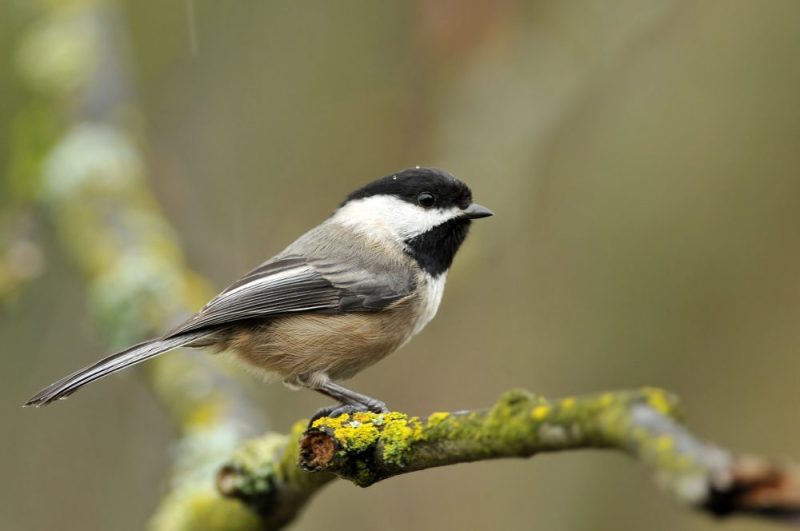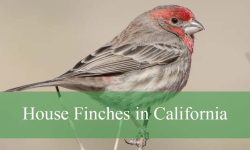Chickadees may be tiny birds, but in Massachusetts they stand out as some of the most charismatic wildlife in the region. Their curious eyes, energetic movements, and bright calls cut through even the coldest winter mornings. Many residents are familiar with their cheerful presence at backyard feeders. Yet only a few realize how extraordinary these birds truly are.
Massachusetts provides the perfect environment for chickadees. Its mixture of hardwood forests, pine groves, wetlands, and suburban green spaces creates a diverse landscape where chickadees thrive year round. Their ability to survive harsh winters, navigate dense woodlands, and maintain complex social structures makes them one of the most fascinating birds in New England.
This article reveals the hidden secrets of chickadees in Massachusetts. Their intelligence, survival strategies, behaviors, and ecological roles show a bird far more remarkable than its small size suggests.
Understanding Chickadees in Massachusetts

What Chickadees Really Are
Chickadees belong to the family Paridae and the genus Poecile. The species most associated with Massachusetts is the black capped chickadee. With its distinctive black cap, contrasting white cheeks, and rounded body, it has become the official state bird.
The black capped chickadee stands out for its expressive personality. It flits between branches with confidence and curiosity and often appears fearless around humans. Its vocalizations are complex and vary depending on the situation. These birds are widely recognized for their intelligence which rivals that of much larger species.
Why Chickadees Are Successful in Massachusetts
Massachusetts presents a climate that alternates between warm summers and cold snowy winters. Chickadees adapt to these extremes by relying on high metabolism and behavioral flexibility. They shift their diets seasonally. They adjust their social structures. They even alter their physiology when needed.
Forests filled with birch, oak, maple, pine, and hemlock provide food and shelter. Suburban areas add feeders, shrubs, and ornamental trees. Even the edges of marshlands offer insects and nesting opportunities.
Chickadees thrive because they are generalists with excellent survival instincts.
Where They Live Across the State
Residents often spot chickadees in forests, wetlands, orchards, parklands, river borders, coastal woodlands, and backyard trees. They require cavity nesting sites which are abundant in older forests where natural rot or woodpecker holes provide safe chambers for breeding.
In winter they retreat to dense conifers where branches shelter them from wind and snow. These evergreen pockets form crucial winter microhabitats.
Hidden Behaviors You Never Knew
Their Intelligence Is Exceptional
Chickadees are often compared to corvids for their cognitive skills. They solve problems quickly. They learn patterns. They recognize individuals. Their spatial memory is especially impressive.
During fall their brains grow in the hippocampal region. This expansion improves their ability to remember the location of thousands of food caches. In spring this region shrinks when memory demands decrease.
They Maintain Detailed Social Codes
Chickadees use vocal signals to coordinate flock movement and communicate threats. Their signature “chick-a-dee-dee-dee” call varies in structure depending on urgency. More “dee” notes mean higher levels of danger.
This subtle vocal flexibility allows chickadees to warn flock members with precision.
Their Curiosity Drives Their Success
Chickadees investigate new objects fearlessly. They hop close to animals and humans out of interest. This behavior allows them to identify novel food sources and efficiently adapt to rapid environmental changes.
Chickadee Anatomy and Survival Adaptations
Feather Structure for Winter Survival
Chickadees grow thick winter plumage. Their feathers trap heat while preventing wind from penetrating. During extreme cold they fluff their feathers to create extra insulation.
The feather layers are essential during Massachusetts winters when temperatures can drop suddenly.
Compact Body and High Metabolism
Their small rounded bodies reduce heat loss. Chickadees burn calories rapidly which keeps their internal temperature steady. Their metabolic rate nearly doubles during winter.
This energy expenditure requires constant feeding which drives much of their daily activity.
Strong Claws and Short Beaks
Their claws grip thin twigs securely even in high winds. Their beaks are designed for precision. They split seeds effortlessly and extract insects from bark crevices.
Feeding Habits Across Massachusetts Seasons
Spring Feeding
In spring chickadees rely heavily on insects. Caterpillars form the majority of their diet. They glean insects from new leaves, bark, and branches.
This high protein diet supports nest building and egg production.
Summer Foraging
During summer chickadees take full advantage of insect abundance. They catch spiders, beetles, larvae, and moths. They feed their chicks almost exclusively insects to support rapid growth.
They also begin caching food by storing insects in bark crevices.
Autumn Caching Behavior
Fall triggers one of the most remarkable chickadee behaviors. They hide seeds individually in thousands of tiny crevices. Each hiding spot is remembered.
Caching helps them survive winter shortages.
Winter Feeding
Winter diets rely heavily on seeds, berries, and suet. Bark insects provide protein when available. Chickadees visit feeders daily and become regular backyard guests.
Because they burn calories quickly they feed almost constantly from sunrise to sunset.
Chickadees and Massachusetts Winters
Coping With Cold Nights
Chickadees enter nighttime torpor. Their body temperature drops slightly which slows metabolism. This reduces energy loss when they cannot feed.
They roost in cavities or thick evergreen branches to minimize heat loss.
Traveling in Winter Flocks
Mixed winter flocks form when temperatures drop. Chickadees, nuthatches, titmice, woodpeckers, and kinglets often forage together. These flocks improve efficiency since each species finds food in different parts of trees.
Chickadees often lead these flocks due to their alertness and keen eyesight.
Using Acoustic Signals in Deep Winter
Winter landscapes are quiet. Chickadees rely more heavily on soft calls to maintain contact among flock members. Their communication becomes even more important when visibility decreases during snow or heavy cloud cover.
Social Structure and Personalities
Hierarchy Within the Flock
Chickadee flocks follow a dominance structure. Older, larger males typically rank highest. Dominance determines priority access to food during scarce periods.
Subordinate birds avoid conflict by spacing themselves strategically.
Close Pair Bonds
Chickadee pairs remain together year round. These bonds strengthen during winter when pairs share roosting cavities and feed close together. Pair communication becomes noticeably more coordinated in early spring.
Flock Leadership
Chickadees act as sentinels for multi species flocks. Their alert calls guide other birds away from predators or toward food-rich areas.
Nesting and Breeding Life
Selecting a Nest Site
Chickadees choose natural holes or abandoned woodpecker cavities. They may inspect several options before selecting one sheltered from predators and weather.
They sometimes excavate soft or rotting wood to widen cavities.
Nest Construction
The female constructs the nest with moss, bark, and plant fibers then lines it with fur or down. The soft interior creates a warm cradle for developing eggs.
Egg Laying and Development
Females lay between six and eight eggs. Incubation lasts about two weeks. During this time males bring food to the nesting female.
Raising the Young
Both parents deliver insects to chicks hundreds of times per day. Chicks grow quickly and leave the nest in two to three weeks. After fledging they remain with their parents for several weeks before dispersing.
Chickadees in Massachusetts Forest Ecosystems
Insect Control
Chickadees play a critical role in controlling populations of forest insects including caterpillars, beetles, and larvae. Their constant foraging helps maintain forest health.
Seed Distribution
By carrying and storing seeds they unintentionally disperse certain plant species. Although most cached seeds are eaten some are forgotten and contribute to forest regeneration.
Supporting Other Birds
Chickadees act as anchors for winter flocks. Their alertness enhances the survival of species that join them.
Chickadees Across Massachusetts Landscapes
Coastal Regions
Coastal woodlands and thickets support chickadees year round. Salt tolerant shrubs provide insects and cover.
Suburban Areas
Chickadees adapt easily to suburban spaces. Feeders, trees, hedges, and yard vegetation create stable habitats.
Interior Forests
Mixed hardwood forests offer prime breeding habitats. The abundance of natural cavities supports nesting.
Farmland Borders
Shrubs, fence lines, and windbreak plantings around farmlands provide perches and nesting sites.
Seasonal Rhythms of Chickadees
Spring
Courtship begins. Males sing the classic “fee-bee” call. Pairs prepare nests and defend small breeding territories.
Summer
Feeding young dominates summer life. Flocks are loose during this period.
Autumn
Food caching peaks. Chickadees roam widely storing seeds in preparation for winter.
Winter
Hardwood forests quiet down. Chickadees lead mixed flocks through snow covered landscapes.
Chickadee Vocal Communication
Complex Calls
The “chick-a-dee-dee” call varies with situation. Flock members understand subtle changes in rhythm and pitch.
The Fee-Bee Song
A simple but clear whistle used primarily by males during breeding season.
Faint Contact Calls
Quiet notes allow individuals to stay connected while foraging in dense branches.
Interactions With Other Wildlife
Woodpeckers
Chickadees depend on abandoned woodpecker cavities for nesting. They also follow woodpeckers to insect rich trees.
Nuthatches
They often forage together but focus on different parts of trees. Nuthatches climb downward while chickadees work branches outward.
Owls
Small owls occasionally roost near chickadee flocks. Chickadees mob them during daytime using loud calls.
Myths and Misconceptions About Chickadees
Myth: Chickadees Cannot Survive Harsh Winters
Their adaptations make them extremely winter hardy.
Myth: Chickadees Eat Only Seeds
They rely heavily on insects especially in breeding season.
Myth: Chickadees Migrate Long Distances
Black capped chickadees remain close to their birth areas for life.
Conservation and Long Term Prospects
Stable Populations
Chickadees remain widespread across the state. Their adaptability protects them from many environmental pressures.
Importance of Dead Trees
Standing dead wood provides cavities crucial for nesting. Maintaining these structures supports chickadee numbers.
Backyard Contributions
Feeders, native shrubs, and nest boxes help chickadees find resources throughout the year.
Daily Life of Chickadees in Massachusetts
Sunrise
Chickadees wake with urgency and begin searching for food immediately. Their energy demands require a rapid start each morning.
Midday
Flocks move through trees in coordinated patterns. Birds explore branches for insects and hidden caches.
Evening
Before sunset chickadees feed heavily to build energy reserves. As darkness falls they retreat to roost cavities.
FAQs About Chickadees in Massachusetts
Are chickadees friendly
They are bold and curious around humans.
What do they eat
Insects, larvae, seeds, berries, suet, and cached food.
Do chickadees migrate
They remain year round with only minor local movements.
How do they survive winter nights
They use torpor, fluff feathers, and roost in cavities.
Will chickadees use nest boxes
Yes. Properly installed boxes attract breeding pairs.
How long do they live
Two to three years on average.
Why do chickadees call so often
Communication supports flock cohesion and alerts others to nearby threats.
Conclusion
Chickadees in Massachusetts may be small in size but they are giants in terms of adaptability, intelligence, and ecological importance. Their seasonal behaviors reveal mastery of both survival and social coordination. Their presence enriches forests, parks, and backyards throughout the state.
Understanding their hidden secrets deepens appreciation for these remarkable birds. Their bright calls and lively movements brighten New England days even in the coldest months. Chickadees prove that some of the most extraordinary wildlife can be found in the smallest and most familiar creatures.






